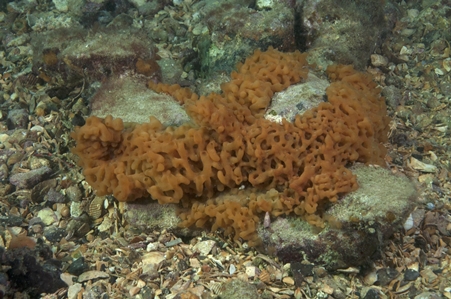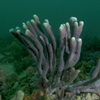General Description
An orange sponge species with encrusting to tubular form. Size of about 10 cm.
Biology
These sponges belong to the class Demospongiae, a group that accounts for approximately 85% of all living sponge species.
Habitat
Reef areas, at depths of 2-30 m.
Sponge gardens
Reefs
Distribution guide
South Australia and Port Phillip in Victoria.
Species Group
Depth
Water Column
Max Size
10 cm
Diet
Plankton or particles
Commercial Species
No
Global Dispersal
Recorded in Australia
Species Code
sp. MoV 6690
Identify
Conservation Status
- DSE Advisory List : Not listed
- EPBC Act 1999 : Not listed
- IUCN Red List : Not listed






